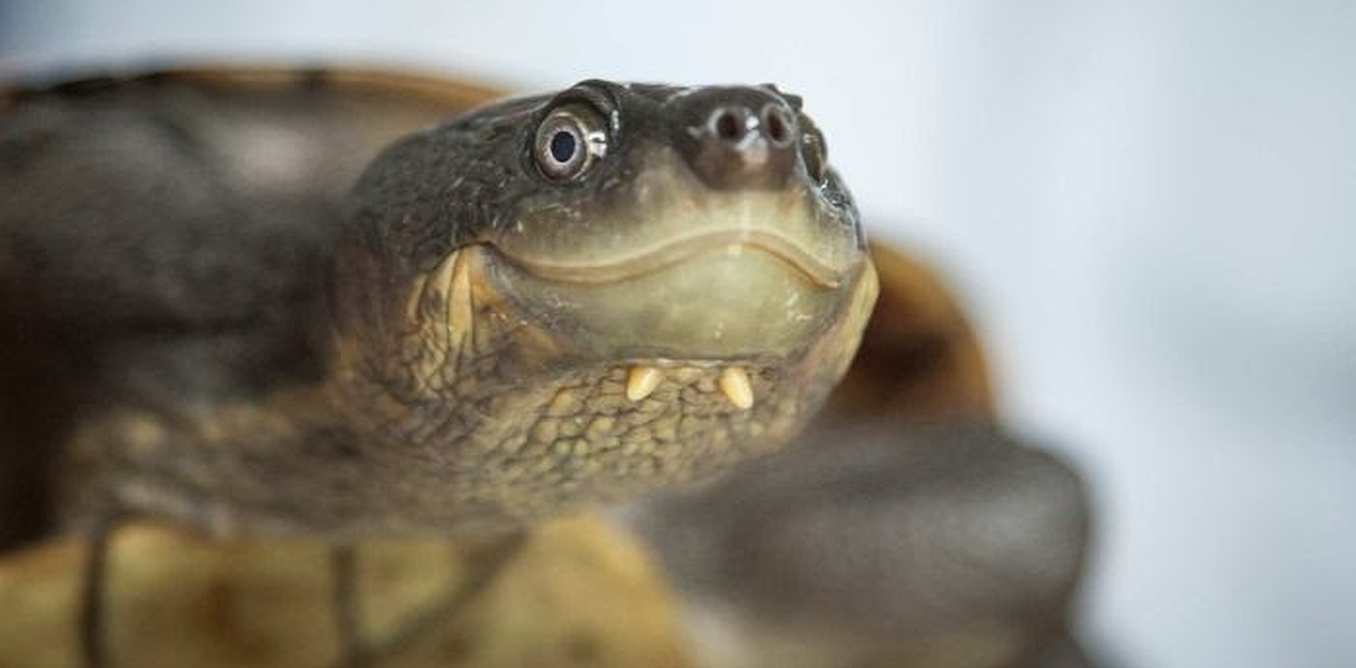What's Inside a Killer Bee Box?!
In the video “What’s Inside a Killer Bee Box?!”, Coyote and his friend Chris Brinton explore the inner workings of a bee box and the behavior of the bees inside. Coyote shares his past experiences with bees, including being stung multiple times and his curiosity about what goes on inside a bee box. With Chris’s expertise, they open a bee box and observe the bees at work. They discuss the different types of bees inside the box, the roles they play, and the structure of the comb. They even search for the queen bee and are amazed by the sights and sounds of the bees inside. Coyote, with Chris’s assurances, even places his bare hand on the bees, demonstrating their docile nature. The video provides a unique and educational experience, giving viewers a firsthand look at the fascinating world of bees inside a bee box.
Watch the video by Brave Wilderness
– [Coyote] Now what would happen if I took off my glove? – I think you should. – Can I try that? – [Chris] Do it. – I’m gonna see just how docile these bees are by placing my hand gently down on top and hopefully a sting doesn’t happen.
– Just go ahead and lay your hand on them. – When it comes to the buzzing world of bees, I am no stranger to these fuzzy insects. I’ve worn a beard of them, but that went horribly wrong and I was stung 60 times in the face, neck and arms. Ouch! I’ve carefully borrowed a slab of honeycomb
From a wild Africanized swarm to determine if killer bee honey is better than regular honey and I even showed you how to properly take care of a bee sting in the event that you accidentally find yourself at the receiving end of one’s barbed stinger. Today, I am back in Tucson, Arizona
And I will once again be working alongside bee expert and honey master, Chris Brinton. Not only has Chris been a friend of mine for many years, but he has also helped us in the creation of every bee episode produced on the Brave Wilderness channel. Given the list above, you’re probably thinking,
What else could we possibly learn about bees? Well, have you ever wondered what’s inside of a bee box, beside the bees? Today, we’re going to show you exactly what’s in these white squares and how they work. Chris, I’m excited, but I have to say, I’m a little intimidated at the same time.
We are surrounded by boxes that are filled with bees, we have isolated a single box to look inside. What you guys probably don’t realize right now is that there are bees flying all around us. How chaotic is it gonna get when we open up this box? – Oh, it’s gonna get chaotic,
Just because we’re opening up their home, we’re taking the roof off. – Right – I mean, if you get your roof ripped off, I wouldn’t be happy about it. – Anything’s possible. You’re probably gonna be a little angry too. – I would be a little angry. However, these bees here have been remodified,
I guess you can say by re-cleaning them to a more docile, European honey bee. – [Coyote] Okay. – So they could be really nice honey. – Well, I have a feeling that everybody assumes they’re going to be buzzing all over us, things are going to get noisy. I’m ready to get inside,
I’ve got a list of burning questions, that I know the Coyote Pack wants answers to. So let’s crack the top and get inside here. So, oh, wow, okay, holy mackerel, that is a lot of bees. Oh, and all on the lid too. – Yeah, this is what happens,
When they start running out of room, when honey season’s coming in. – Wow! – So this is what we call burr comb, this is when they start actually running out of space down here. This means they actually need another box. But yeah, actually to tell you the truth,
What a very nice colony of bees. – [Coyote] That is what you would call a full house for sure. Now I notice that there are these different slats, that line the inside of the box, are these where they’re actually building the comb? – So these are what we call frames, okay,
This is where the bees do their work. So they draw comb, which is wax, which is basically honey, then they will make cells for either A, honey, B, pollen, C, babies and what she’ll do is they’ll basically contain their middle of their nest, all their brood is gonna be down in here.
– [Coyote] Okay, all the babies are tucked down into there? – [Chris] That’s where Momma’s doing most of her work right there. – Okay. Let’s be quiet for just a second, I want to see if we can pick this up on the microphone. That is loud. Bees are buzzing. So if I’ve done my research correctly, inside is basically made up of three different bee types, drones, workers and a single queen and what most people don’t realize is that the majority of the bees inside of a box are actually female. All the workers are females
And they can’t actually reproduce, it’s only the queen, that can reproduce with the drones, am I correct in saying that? – Absolutely, they have different stages inside of the hive, when they emerge, they’re nurse bee, they graduate from a nurse bee to a guard bee.
– [Coyote] Hm-mm, are those the ones up front? – [Chris] Yep, these are the ones, that kind of protect the front of the entrance and then from a guard bee, they turn into a forager. – So we’ve lifted off the roof of the bee box
At this point, let’s pull out one of these cells and see exactly what is waiting for us inside of the box. Can we do that? – Let’s go ahead and take this lid and we’ll set this in the front out here, so that way, if they feel that they want to march
Back into their home, they can do that. – [Coyote] Okay, so that’s the first cell right there, wow. Look, they’re just staying right on the comb. – This is the beauty about working with European honey bees. When we changed these over from an Africanized nest, we turned it into this, this is workable,
This is something that we can literally take to farmer’s fields and pollinate crops with and the best part about it is, when you can move your hand and you can place your hands on them and they don’t try to sting you, this makes beekeeping so enjoyable.
– Now what would happen, if I took off my glove and laid it on top of the bees like that, do you think I’d get stung? – I bet you you wouldn’t. – Hm. – As long as you don’t really push on it. I think you should. – Can I try that?
– Do it. – I’m gonna try that. I’m gonna see just how docile these bees are by placing my hand gently down on top of them and hopefully a sting doesn’t happen. – [Chris] Just go ahead and lay your hand on them. – Whoa, that’s a crazy feeling, they’re all vibrating. It’s actually really warm. – It is. Honey bees keep nests at 92 to 95 degrees. So no stings. – No stings. So can we find the queen? – So if you look on the top, you’ll see a lot of young nurse bees,
Their nurse job is to take care of things, that she just laid or hatching eggs. – Can we take a look and see if we can find her? – Let’s see if we can find this queen. So what we’ll do is we’ll pull these frames back
And then what we’ll do is we’ll actually take this frame and we’ll go straight up with it. – Okay. – Nice, and leaving a lot of room. – Oh, look at all those bees. – So what we’re gonna do is the first thing I do
Is I always look right where I pull it up and I look for her, okay. – Yeah. – And then I’ll flip that over and I’ll look on the backside here and you’re gonna look for a bee, that is twice the size of a standard worker bee.
– [Coyote] So let me ask this question real quick, since this is so cool to be able to see this, these cells, what’s inside of here, honey, or are those larva that are behind each one of these caps? – [Chris] This is all larva, these are all eggs,
That have turned into young, baby bees and you can see like that just emerged right there. – Yeah. – That right there is what these little, tiny, fuzzy bees are. She just hatched out of her cell. – Baby bees, very cute. – Baby bees. – Okay, so no queen on that frame.
How many bees would you guess are inside of this box? – You know, it’s a really hard guess. I mean, a lot of times people over speculate, but I’m gonna say it’s probably around 25,000. – Wow, 25,000 bees possibly inside of this colony. – Okay, so now we’ve got another frame up here
And you can see this one is full of food here too, ’cause this is all pollen. Being the fact that we’re not seeing any eggs, we’re not really close to where she’s at. – Oh, okay, so more eggs. These are cells that have hatched out, so less actual active eggs versus-
– More babies that are emerging. See how they’re all capped over? – Oh yeah. – So this right here, when you move these bees out of the way, you can just touch them, because they’re social insects, so you don’t have to worry about them trying to sting you,
They like to be touched, because they touch each other all day. – Yeah. – [Chris] But you can see all that, that’s all brood, that’s gonna emerge and that’s all brand new babies, that are gonna fill this box even more, if we don’t give them more space. – That’s crazy.
– So we come to the other side and we’re still looking, because we still don’t see any eggs. – Where is the queen? So far we are owed for three, but she has to be in here. – [Chris] She has to be in here, because there’s babies all over.
– Alright, here we go, is this the frame with the queen? – Nope, this is probably not gonna be. – A lot of honey. – All honey, but you know what that might mean is that might mean you need to try that. – Can I try that, honey?
– I think you should try that. – Okay. – What I’m gonna do is I’m just going and do this and I’m gonna get you a big, old, blob of honey right there. – [Coyote] Whoa, are you kidding me? – Now unzip your veil. – Really?
– [Chris] Yeah, I mean, they didn’t sting you. – I guess that’s true. – There’s a few that are out here, but I mean, if you go straight up underneath your veil, you should be able to eat that. – Wow, this is cool, alright, I’m gonna try honey right out of the hive.
This might get a little sticky. Don’t get honey on my mic. Wow! Holy delicious! – Isn’t that amazing? – That is unbelievable. This might be better than the killer bee honey, that I had that one time. Whoa! This is making my eyes water, it’s so sweet. Wow, that is incredibly rich with flavor. That is unlike any honey I have ever tasted before.
You wanna talk about an energy rush? That’s it, right there, whoo! (upbeat dance music) Ultimate energy rush. Man, that is good. You get a little bit of wax in there in your teeth, chew it up. – As natural as you can get it right there. – That was cool, wow, thank you, Chris.
I did not expect to be eating some honey literally right out of the hive today. Okay, well, we’re still looking for the queen. – [Chris] We got to go back in here and go to the other side. – We’re going backwards now and remember we are looking for a bee,
That is twice the size of the other bees, so she should stand out pretty obviously. Ooh, ooh, Chris, is that her? – That’s her right there. – Wow. – Let’s go ahead and grab her. – Okay, that is the queen, look how short those little wings are.
Now here’s the ultimate question, can a queen sting? – [Chris] She can sting other queens. – [Coyote] Okay, so she wouldn’t be able to sting me, not that I want to get stung by her, but she is capable of stinging other queens. Now is that for the defense of the colony?
– [Chris] That is for her taking over the colony or let’s just say she’s a virgin, she hatches out first and there’s other ones that could possibly take the nest over, she’s gonna go ahead and get rid of that competition she’s gonna be. – I see, the queen is a big bee.
Well, it took a little bit of effort, but we finally found the queen and now we know the answer, yes, the queen can sting, but she can only sting other queens. Alright, Chris, well, I feel very honored to be in the presence of the queen.
– You get to meet the queen. – Wow, and there she goes, disappeared right back down into the hive. Well, I’d say we learned quite a bit today, exactly what’s inside of a bee box. I got to try honey straight out of the hive
And even got to meet the queen, that was fantastic. Chris, thank you so much for this education in bee boxes. – You’re welcome, Coyote. – I’m Coyote Peterson, be brave, stay wild. We’ll see you on the next adventure. The hive structure of honey bees is a highly functional world, that at a first glance seems simple, but what you don’t realize is that honey bees are an intricate part of our planet. Every year, millions upon millions of bees are required for the pollination of plants, many of which become the foods,
That we are so accustomed to enjoying. I encourage you to do a little more research on your own. Bees are fascinating and who knows, maybe one day, you’ll become your very own backyard honey farmer. And if you’re a huge fan of Brave Wilderness, check out our merchandise at shopbravewilderness.com.
You’ll find everything from t-shirts to hoodies, to backpacks and even my authentic Coyote Peterson hat.
About Brave Wilderness
The Brave Wilderness Channel is your one stop connection to a wild world of adventure and amazing up close animal encounters!
Video “What's Inside a Killer Bee Box?!” was uploaded on 08/28/2021 to Youtube Channel Brave Wilderness



































